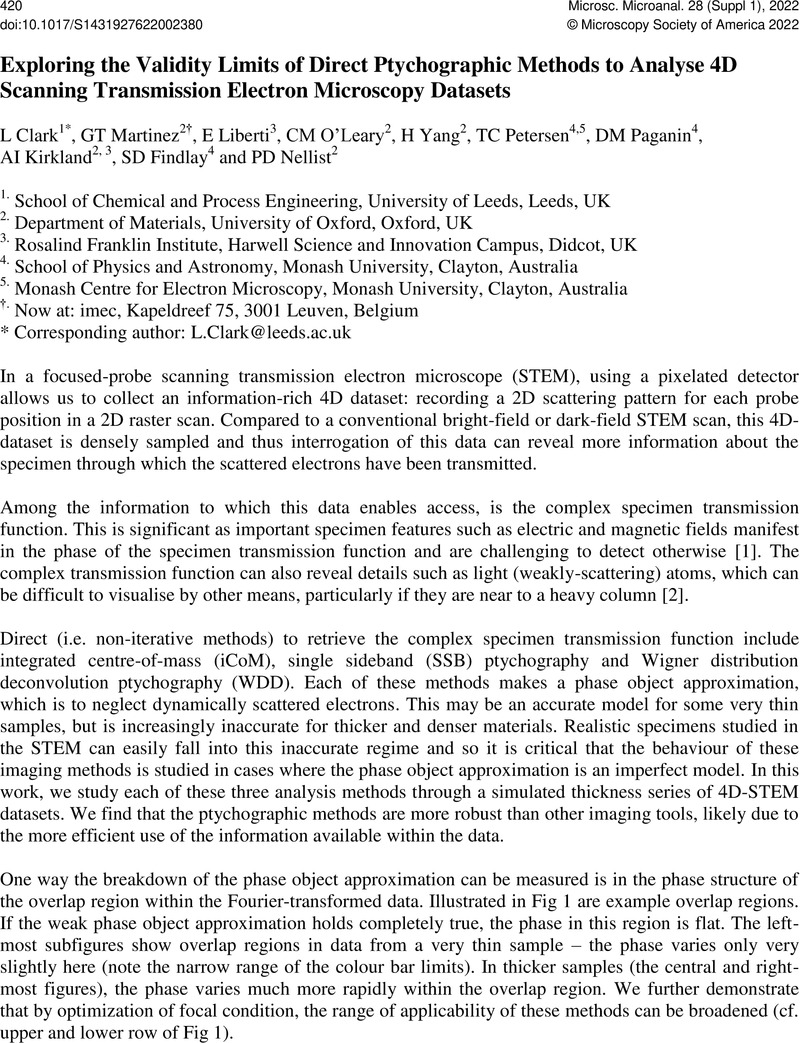No CrossRef data available.
Article contents
Exploring the Validity Limits of Direct Ptychographic Methods to Analyse 4D Scanning Transmission Electron Microscopy Datasets
Published online by Cambridge University Press: 22 July 2022
Abstract
An abstract is not available for this content so a preview has been provided. As you have access to this content, a full PDF is available via the ‘Save PDF’ action button.

- Type
- Developments of 4D-STEM Imaging - Enabling New Materials Applications
- Information
- Copyright
- Copyright © Microscopy Society of America 2022
Footnotes
†
Now at: imec, Kapeldreef 75, 3001 Leuven, Belgium
References
Clark, L et al. Physical Review A 97(4) (2018) p. 043843. doi.org/10.1103/PhysRevA.97.043843CrossRefGoogle Scholar
The authors acknowledge funding from the Discovery Projects funding scheme of the Australian Research Council (Project No. DP160102338), European Union's Horizon 2020 under the Marie Sklodowska-Curie grant agreement No 891504 (BeamSense) and the European Union's Horizon 2020 research and innovation program under Grant No 823717 (ESTEEM3).Google Scholar



